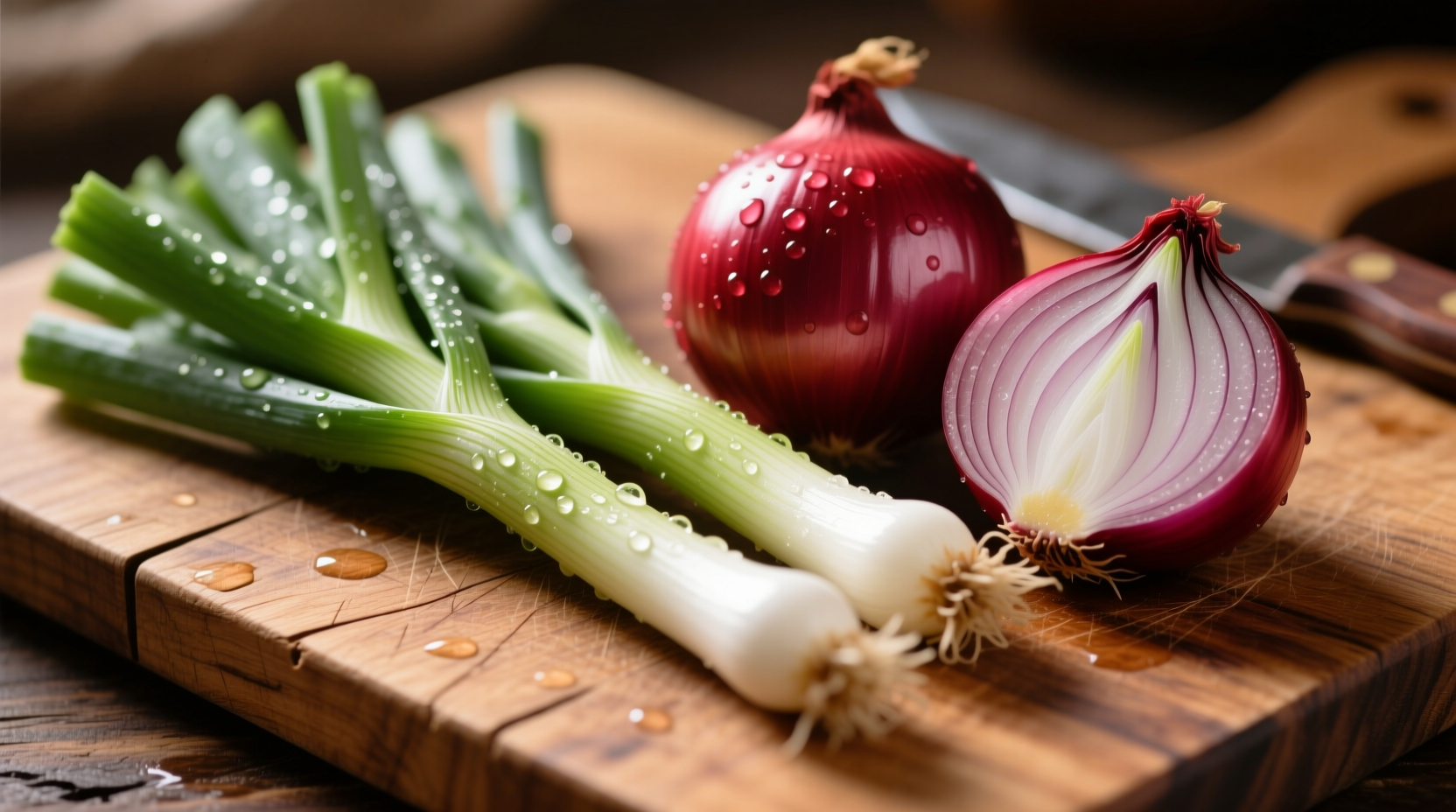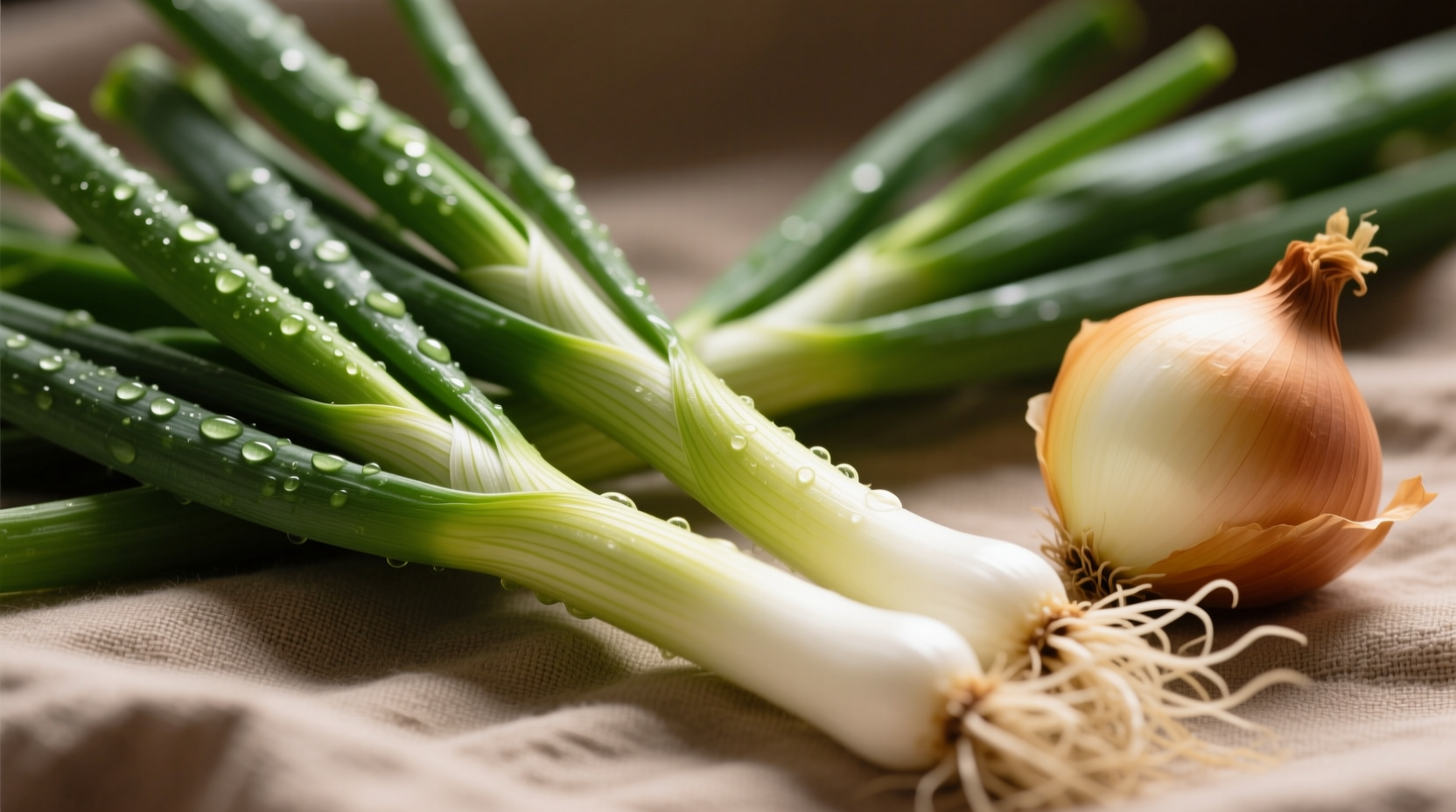Confused about the difference between onions and scallions? You're not alone. Many home cooks struggle to distinguish these allium relatives or understand when to use each. This guide cuts through the confusion with science-backed comparisons, practical substitution guidelines, and culinary insights you can apply immediately in your kitchen.
Understanding the Allium Family Relationship
Onions and scallions share the same botanical family (Alliaceae) but represent different growth stages. Scallions, scientifically known as Allium fistulosum or sometimes immature Allium cepa, are harvested when the plant is young—before the bulb swells. Regular onions continue growing until the bulb matures and stores energy for reproduction.
| Characteristic | Scallion (Green Onion) | Mature Onion |
|---|---|---|
| Botanical Name | Allium fistulosum or immature Allium cepa | Allium cepa |
| Growth Stage | Harvested young (60-80 days) | Full maturity (100-170 days) |
| Bulb Development | Small or nonexistent | Large, layered bulb |
| Flavor Profile | Mild, fresh, slightly sweet | Strong, pungent, complex when cooked |
| Primary Culinary Use | Raw garnish, quick-cook applications | Base for cooking, caramelizing, roasting |
This comparison comes from research conducted by the USDA Agricultural Research Service, which maintains comprehensive databases on vegetable varieties and their characteristics (ars.usda.gov).
When Flavor Matters: Culinary Applications Compared
Understanding the flavor chemistry helps explain why these alliums behave differently in cooking. Scallions contain lower concentrations of sulfur compounds responsible for the sharp bite in mature onions. This makes them ideal for raw applications where you want onion flavor without overwhelming pungency.
Perfect Uses for Scallions
- As a fresh garnish for soups, tacos, and Asian dishes
- In salad dressings where milder onion flavor is preferred
- Quick stir-fries added at the end of cooking
- Compound butters and herb blends
Best Applications for Mature Onions
- Soffritto, mirepoix, and other flavor bases
- Caramelizing for depth of flavor
- Roasting to develop sweetness
- Pickling for tangy condiments
According to Cornell University's Food Science Department, the sugar-to-water ratio changes significantly as onions mature, explaining why mature onions caramelize better while scallions maintain their crisp texture (foodscience.cals.cornell.edu).

Substitution Guide: When You Can Swap and When You Can't
While substitutions are possible, understanding the limitations prevents culinary disasters. Here's when you can successfully interchange these alliums:
Safe Substitutions
- Use 3-4 chopped scallions to replace 1 small onion in raw applications
- Substitute scallion whites for minced onion in quick-cook dishes
- Replace 1/4 cup finely diced onion with 3 tbsp scallion greens in dressings
When Substitutions Fail
- Never substitute scallions for mature onions in caramelizing—they lack sufficient sugar content
- Avoid using mature onions raw where scallions are specified (texture and flavor will dominate)
- Don't expect scallions to provide the same structural integrity in cooked dishes
Nutritional Comparison: Health Benefits Revealed
Both provide valuable nutrients, but their nutritional profiles differ based on growth stage. According to USDA FoodData Central:
- Scallions contain 30% more vitamin C than mature onions by weight
- Mature onions have higher concentrations of quercetin, a potent antioxidant
- Scallion greens provide significant vitamin K (100g contains 207% of daily value)
- Both contain organosulfur compounds with potential health benefits
The National Onion Association notes that the sulfur compounds responsible for onion's characteristic smell also contribute to potential health benefits, including anti-inflammatory properties (onions-usa.org).
Selecting and Storing for Maximum Freshness
Proper selection and storage significantly impacts flavor and shelf life:
Choosing Quality Alliums
- Scallions: Look for crisp, bright green tops and firm white bases without yellowing
- Mature onions: Select firm bulbs with dry, papery skins and no soft spots
Storage Guidelines
- Scallions: Store in a jar with 1 inch of water in the refrigerator (change water every 2 days) for up to 10 days
- Mature onions: Keep in a cool, dark, well-ventilated space (not the refrigerator) for 1-2 months
- Never store either near potatoes—they accelerate sprouting
Common Misconceptions Clarified
Several myths persist about these alliums:
- Myth: Scallions and spring onions are the same thing
- Fact: Spring onions have slightly larger bulbs and more developed roots than scallions
- Myth: The green parts of scallions are too strong to eat
- Fact: The greens provide different flavor notes and valuable nutrients
- Myth: Red onions are just colored versions of yellow onions
- Fact: They're distinct varieties with different flavor compounds and anthocyanins
Practical Tips for Home Cooks
Maximize your allium potential with these professional techniques:
- Separate scallion whites and greens when cooking—they require different timing
- Soak sliced onions in ice water for 10 minutes to reduce sharpness for raw applications
- Use scallion roots in homemade stocks for subtle onion flavor
- When substituting, adjust quantities based on the dish's cooking time and desired flavor intensity











 浙公网安备
33010002000092号
浙公网安备
33010002000092号 浙B2-20120091-4
浙B2-20120091-4